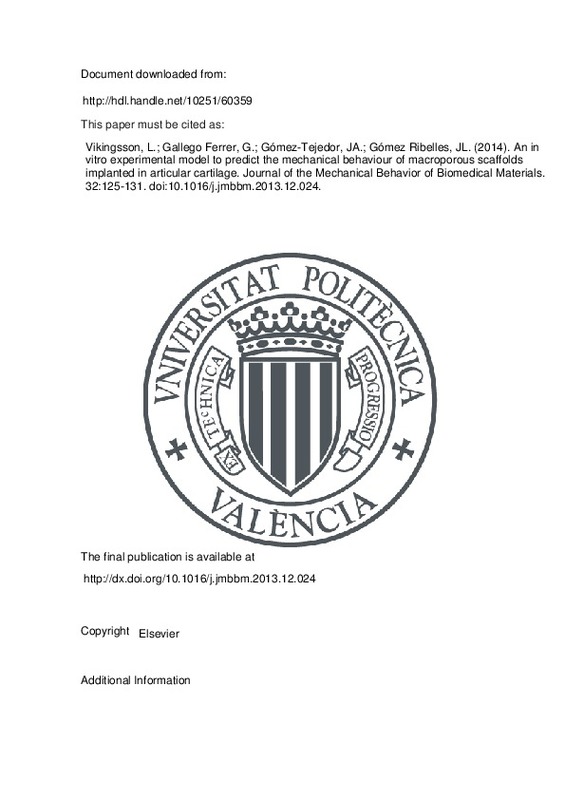JavaScript is disabled for your browser. Some features of this site may not work without it.
Buscar en RiuNet
Listar
Mi cuenta
Estadísticas
Ayuda RiuNet
Admin. UPV
An in vitro experimental model to predict the mechanical behaviour of macroporous scaffolds implanted in articular cartilage
Mostrar el registro completo del ítem
Vikingsson, LKA.; Gallego-Ferrer, G.; Gómez-Tejedor, JA.; Gómez Ribelles, JL. (2014). An in vitro experimental model to predict the mechanical behaviour of macroporous scaffolds implanted in articular cartilage. Journal of the Mechanical Behavior of Biomedical Materials. 32:125-131. https://doi.org/10.1016/j.jmbbm.2013.12.024
Por favor, use este identificador para citar o enlazar este ítem: http://hdl.handle.net/10251/60359
Ficheros en el ítem
Metadatos del ítem
| Título: | An in vitro experimental model to predict the mechanical behaviour of macroporous scaffolds implanted in articular cartilage | |
| Autor: | Vikingsson, Line Karina Alva | |
| Entidad UPV: |
|
|
| Fecha difusión: |
|
|
| Resumen: |
A model is proposed to assess mechanical behaviour of tissue engineering scaffolds and predict their performance in vivo during tissue regeneration. To simulate the growth of tissue inside the pores of the scaffold, the ...[+]
|
|
| Palabras clave: |
|
|
| Derechos de uso: | Reserva de todos los derechos | |
| Fuente: |
|
|
| DOI: |
|
|
| Editorial: |
|
|
| Versión del editor: | http://dx.doi.org/10.1016/j.jmbbm.2013.12.024 | |
| Código del Proyecto: |
|
|
| Agradecimientos: |
The UPV group acknowledges the support of the Spanish MICINN through project MAT2010-21611-C03-01. CIBER-BBN is an initiative funded by the VI National R&D&i Plan 2008-2011, Iniciativa Ingenio 2010, Consolider Program. ...[+]
|
|
| Tipo: |
|







![[Cerrado]](/themes/UPV/images/candado.png)


